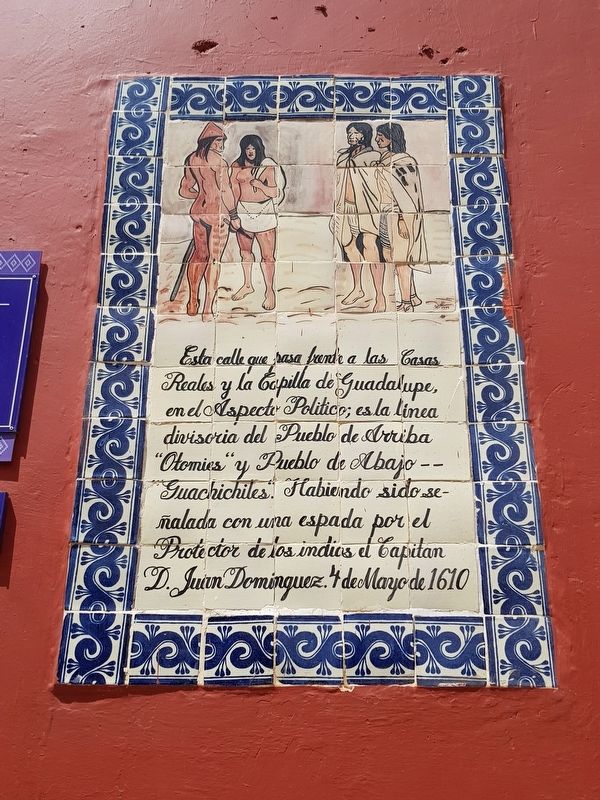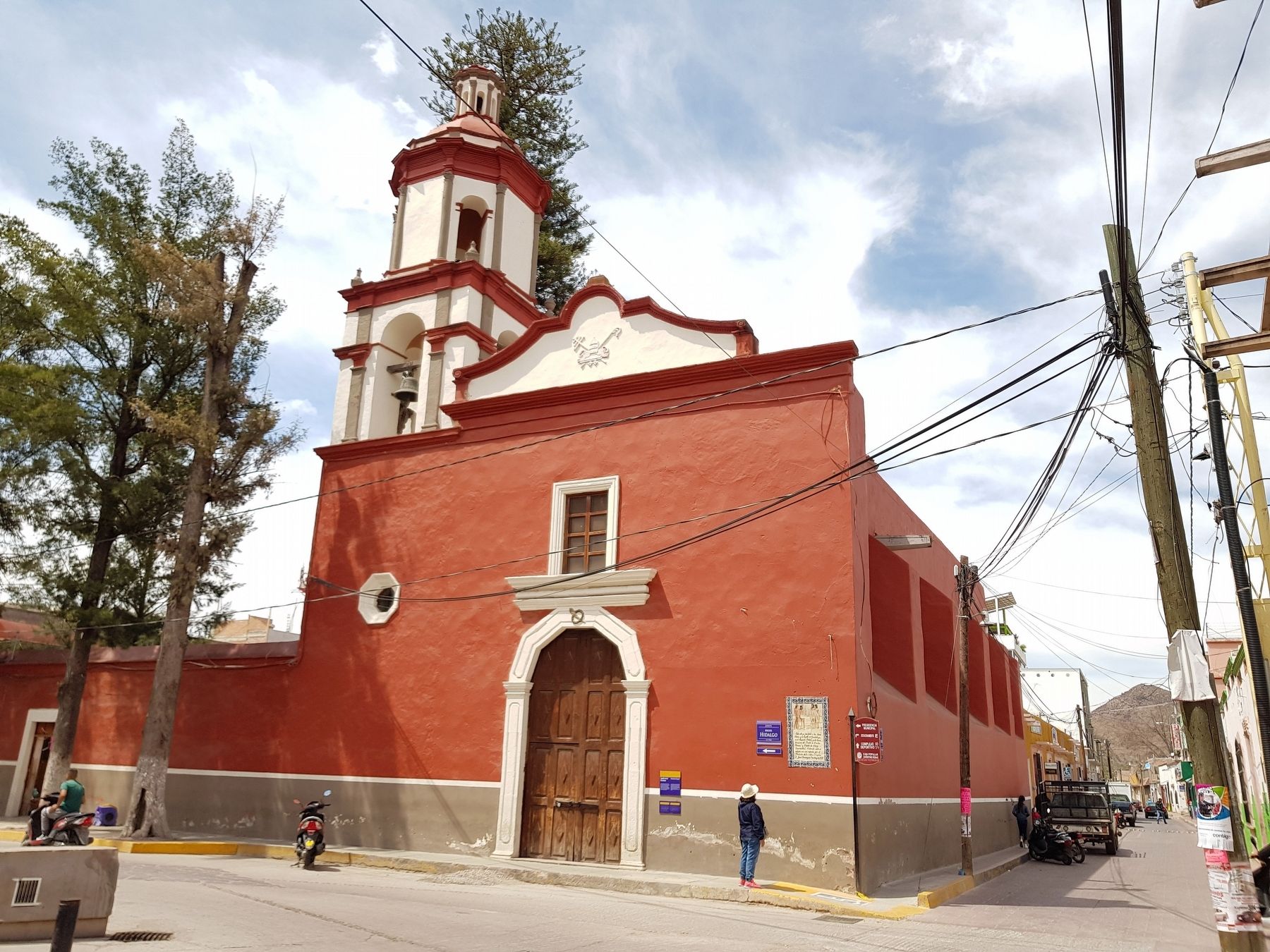Santa María del Río, San Luis Potosí, Mexico — The Northeast (and Central Highlands)
Otomíes and Guachichiles
This street that passes here in front of the Royal Treasury (Casas Reales) and the Chapel of Guadalupe was the political dividing line between the "Otomíes", or Upper Town, and the "Guachichiles", or Lower Town. This line was marked with a sword by the Protector of the Indians, Captain Juan Domínguez on May 4, 1610.
Erected 1999.
Topics. This historical marker is listed in these topic lists: Colonial Era • Native Americans • Settlements & Settlers. A significant historical date for this entry is May 4, 1610.
Location. 21° 48.049′ N, 100° 44.22′ W. Marker is in Santa María del Río, San Luis Potosí. Marker is at the intersection of Miguel Hidalgo and Calle Pascual M. Hernández Segura, on the right when traveling south on Miguel Hidalgo. Touch for map. Marker is in this post office area: Santa María del Río SL 79560, Mexico. Touch for directions.
Other nearby markers. At least 8 other markers are within walking distance of this marker. Purísima Chapel (here, next to this marker); Tourism Office (a few steps from this marker); The Parochial School of Music (a few steps from this marker); Primo Feliciano Velázquez Rodríguez (within shouting distance of this marker); City Hall (within shouting distance of this marker); Foundation of Santa María del Río (within shouting distance of this marker); Hidalgo Garden (within shouting distance of this marker); Dividing Line Between Otomíes and Guachichiles (about 90 meters away, measured in a direct line). Touch for a list and map of all markers in Santa María del Río.
Regarding Otomíes and Guachichiles. Otomíes and Guachichiles are two indigenous groups of Mexico. The Otomí (more correctly known as Hñähñu) are considered to have been the original inhabitants of the Mexican central highlands before the arrival of the Aztecs. They lived in areas that now include the states of Hidalgo, Querétaro, the State of Mexico and southern San Luis Potosí. The Guachichiles are generally considered to be part of the larger group known as Chichimecas. These groups generally lived further to the north in harsher desert regions. The two groups were probably brought together
during the Conquest as Santa María del Río was a "pueblo de indios" (an indigenous town), where Franciscan missionaries attempted to evangelize to the concentrated members of both groups.
Credits. This page was last revised on April 14, 2019. It was originally submitted on April 12, 2019, by J. Makali Bruton of Accra, Ghana. This page has been viewed 217 times since then and 23 times this year. Photos: 1, 2. submitted on April 12, 2019, by J. Makali Bruton of Accra, Ghana.

